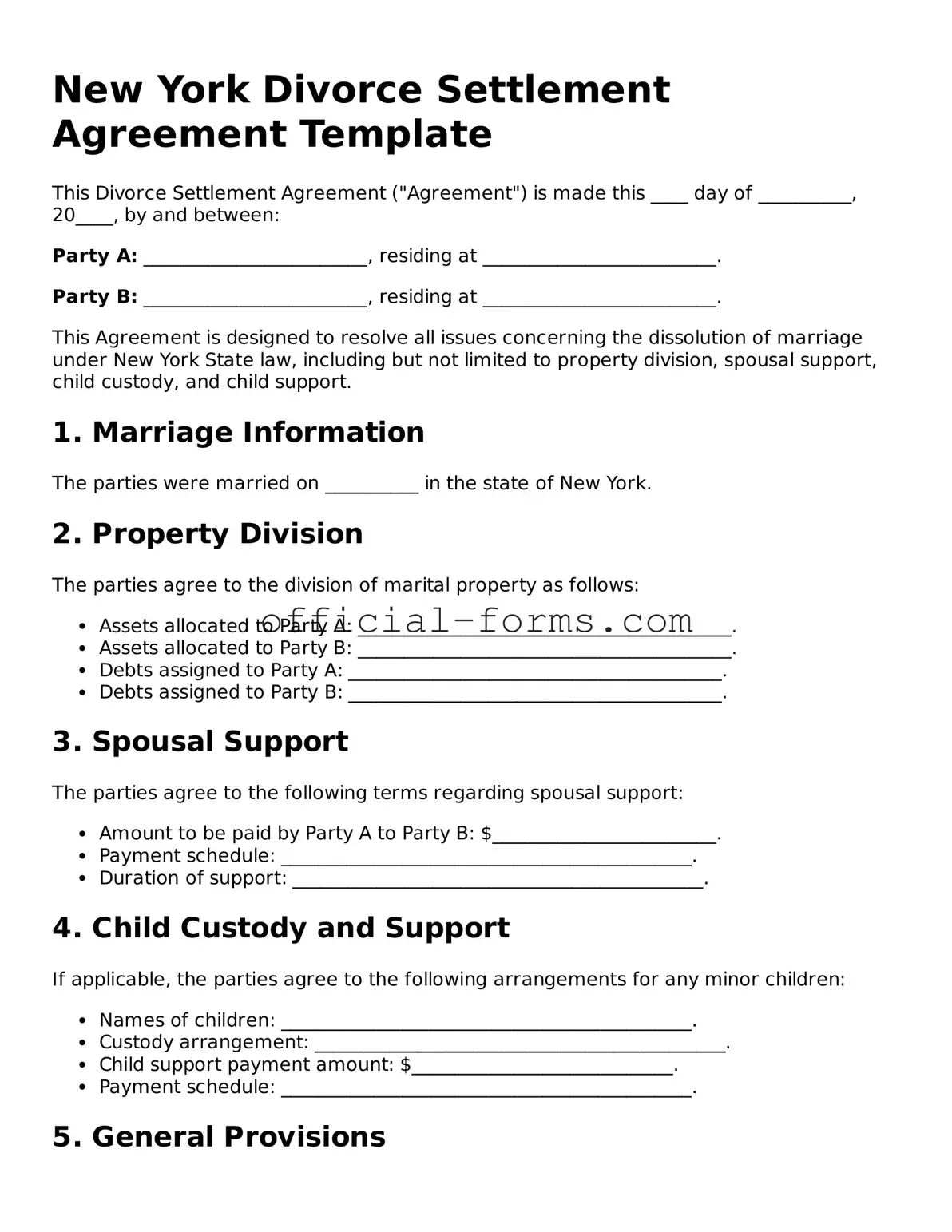Filling out the New York Divorce Settlement Agreement form can be a daunting task. Many individuals find themselves making common mistakes that can lead to complications down the line. Understanding these pitfalls is crucial for a smooth process. Here are ten mistakes to watch out for.
First, many people fail to provide accurate financial disclosures. This includes not listing all assets, debts, and income sources. Incomplete information can lead to disputes later, so it’s essential to be thorough and honest.
Another frequent error is neglecting to consider tax implications. Divorce can have significant tax consequences, especially regarding asset division and alimony. Failing to account for these can result in unexpected financial burdens after the settlement is finalized.
People often overlook the importance of specifying child support details. Without clear terms regarding payment amounts and schedules, misunderstandings may arise. It’s vital to outline how much support will be provided and the duration for which it will be paid.
Additionally, some individuals forget to address health insurance coverage for children. This aspect is critical, as it ensures that children have access to necessary medical care. Clearly stating who will provide coverage can prevent conflicts in the future.
Another common mistake is not including provisions for future changes. Life circumstances can shift, and it’s wise to have a plan for modifications to the agreement. This foresight can save time and stress later on.
Many people also fail to consult with a legal professional. While it’s possible to complete the form independently, having an expert review it can help identify potential issues. Legal advice can be invaluable in ensuring that everything is in order.
In some cases, individuals may rush through the process without fully understanding the terms. Each section of the form is significant, and taking the time to comprehend what each clause means is essential. Hasty decisions can lead to regrets later.
Another mistake involves not keeping copies of the completed form. Documentation is crucial in any legal process. Without a record, individuals may find themselves in a difficult position if disputes arise.
People often forget to check for consistency across all documents. Inconsistencies can lead to confusion and may even affect the validity of the agreement. Ensuring that all paperwork aligns is a necessary step.
Finally, some individuals may underestimate the emotional aspect of the process. Divorce is not just a legal matter; it’s a personal one as well. Acknowledging feelings and taking the time to process them can lead to better decision-making throughout the settlement process.
By being aware of these common mistakes, individuals can approach the New York Divorce Settlement Agreement form with greater confidence and clarity. Taking the time to avoid these pitfalls can lead to a smoother and more satisfactory outcome for everyone involved.
